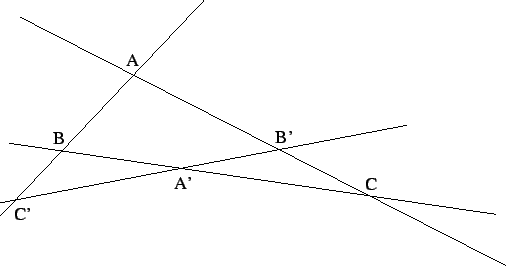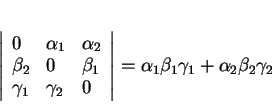Théorème 2.5.4
(Menelaüs) Soient un triangle

et des points

,

et

choisis respectivement sur

,

et

. Les points

,

et

sont alignés si et seulement si
Remarque 2.5.6
Pour éviter les cas où un rapport de section n'existe pas, on peut formuler la condition de l'énoncé à l'aide des coordonnées barycentriques

, etc. des points

,

,

. Elle s'écrit alors simplement:

.


